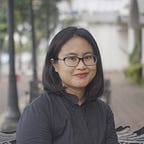Financial inclusion is understood differently and it’s a problem
28 January 2020 was a history for Indonesia’s financial policymakers and industry players. That day President Joko Widodo announced Indonesia’s financial inclusion target by 2024 has to be 90%, meaning that at least 90% of the adult population in Indonesia has to have used financial services.
Ministries and state agencies in Indonesia have since pivoted their policies, forged more partnerships with multinational organizations and driven private sector involvement deeper in government programs, all to meet the President’s demand. On numerous public events, it was stated that Indonesia’s financial inclusion target in 2024 is 90%, but unfortunately, at most times it wasn’t elaborated further what the percentage refers to.
Financial inclusion is understood differently. While some readers of this article would argue that financial account ownership determines financial inclusion and some others would argue that financial service usage is the single identifier of a country’s financial inclusion, it’s best to assume that account ownership and account usage can’t stand alone without the other.
In a country where someone can make payments and withdraw money from an account that doesn’t belong to themselves but their family member, and where another one may let their savings account into a dormant account, different perspectives of what constitutes a country’s financial inclusion is a problem the government and private sector should be mindful of. Financial literacy campaigns ideally measure impact to account usage and ownership, but as this problem is under addressed, we have become conditioned to think that it’s okay to use somebody’s bank account until we learn it the hard way.
In July 2021, someone posted on Twitter that IDR 35 million from her savings went missing and then invited anyone to refrain from using the bank’s services forever. Once the post went viral and that the bank conducted investigation of her case, it turned out her husband withdrew the money without her knowledge.
Similar situation took place in March 2022 where someone made a formal apology to a bank with which she has an account, following her accusations of the bank’s customer service. After the bank and this person studied the CCTV video footage at the time her money was withdrawn, she found it was her spouse who took her money.
If every adult in Indonesia only uses a bank or digital wallet account that belongs to nobody but themselves, potential losses can be mitigated. To achieve this ideal, financial literacy programs should not only present legal bank and non-bank products and services in Indonesia, but also communicate benefits of using accounts that belong to oneself.
Internal communication, a problem solver
Government employees, who design the most financial literacy programs in Indonesia, should come to an agreement with each other that both financial account ownership and usage determine Indonesia’s financial inclusion. Such agreement is impossible without the same level of awareness, and for this matter, government-initiated internal communication program should have started long ago.
Communication activities are ideally well-tailored to the intended audience. When we talk about the Indonesian government’s internal communication program, audience mapping should ideally be as specific as possible. For example, an internal communication program can be tailored to ASNs (a term for government employees in Indonesia) grouped by roles and habit, as a start.
When we speak about administrative employees, particularly those who browse social media on daily basis, engaging social media content could be a tool to inform them what really constitutes a country’s financial inclusion, and why both account usage and ownership should be considered. This would be particularly helpful for those in charge of activity budgeting in their respective work unit, as they are often the only person to be tasked to determine the number and origin of participants to government-organized public campaigns.
As to groups of high-level officials who spend less time consuming contents on mass and social media, small and large-group coordination meetings can be helpful in delivering the intended key messages.
Apart from content creation and coordination meetings, surveys can also be a powerful tool to initiate awareness that there’s more than one approach to measure financial inclusion. DNKI (Indonesia’s National Council for Financial Inclusion)-backed Financial Inclusion Insights of 2018 and 2020 present both account usage and ownership data in Indonesia, making itself the first financial inclusion-related survey in Indonesia to ever do it. Public exposé of the survey was among the first attempts of the government’s internal communication.
In short, financial inclusion is understood differently and it’s a problem that may hinder Indonesia from reaching true financial inclusion. The awareness that financial inclusion is determined by either financial account ownership or usage, instead of both, among policymakers and industry players is a situation that must be addressed immediately.
This article was published on The Jakarta Post with the title “Tackling problematic interpretations of financial inclusion”
